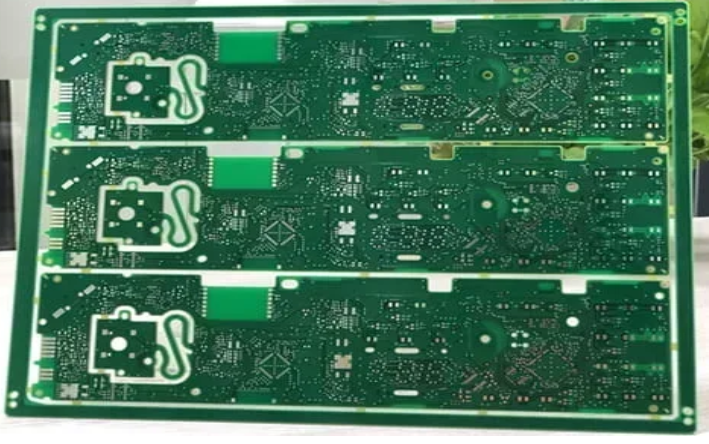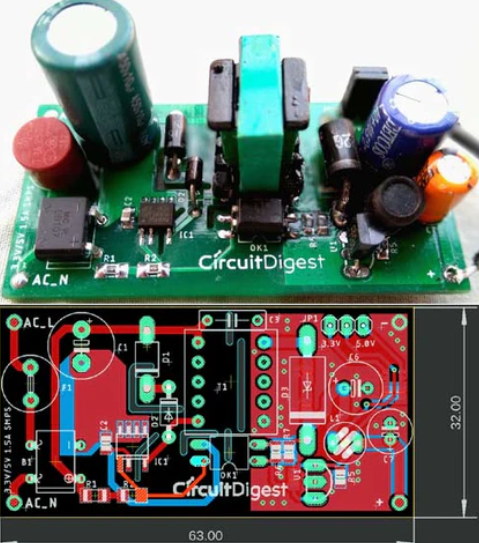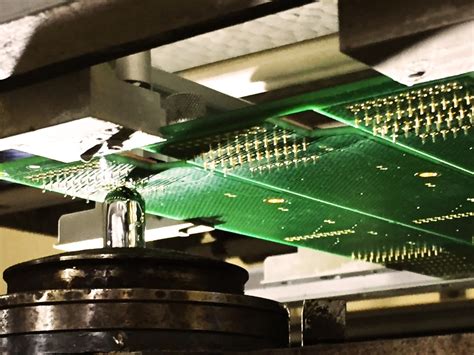Metal core or aluminum pcb
Advantages Of Metal Core PCBs In High-Performance Applications
Metal core printed circuit boards (PCBs) have emerged as a pivotal component in high-performance applications, offering distinct advantages over traditional PCB materials such as aluminum. As industries increasingly demand efficient thermal management and enhanced durability, metal core PCBs have become a preferred choice, particularly in sectors like automotive, aerospace, and high-power LED lighting. Understanding the benefits of metal core PCBs in these demanding environments is crucial for engineers and designers seeking to optimize performance and reliability.
One of the primary advantages of metal core PCBs is their superior thermal conductivity.
Unlike aluminum PCBs, which can struggle with heat dissipation in high-power applications, metal core PCBs are designed to efficiently transfer heat away from critical components. This is achieved through the integration of a metal substrate, typically aluminum or copper, which acts as a heat sink. By effectively managing heat, metal core PCBs help prevent overheating, thereby extending the lifespan of electronic components and ensuring consistent performance. This capability is particularly beneficial in applications where thermal management is paramount, such as in LED lighting systems, where excessive heat can lead to reduced luminosity and premature failure.
In addition to thermal management, metal core PCBs offer enhanced mechanical stability.
The metal substrate provides a robust foundation that can withstand mechanical stress and vibration, which are common in high-performance environments. This durability is essential in automotive and aerospace applications, where electronic systems are subjected to harsh conditions and must maintain functionality over extended periods. The rigidity of metal core PCBs also reduces the risk of warping and deformation, which can compromise the integrity of the circuit and lead to malfunctions.
Furthermore, metal core PCBs exhibit excellent dimensional stability, which is crucial for maintaining precise electrical performance.
The metal substrate minimizes the expansion and contraction of the PCB material due to temperature fluctuations, ensuring that the circuit maintains its intended configuration. This stability is particularly advantageous in applications that experience wide temperature variations, such as outdoor LED displays and automotive electronics. By maintaining consistent electrical characteristics, metal core PCBs contribute to the reliability and accuracy of high-performance systems.
Another significant benefit of metal core PCBs is their ability to support higher power densities.
As electronic devices become more compact and powerful, the need for efficient power distribution becomes increasingly important. Metal core PCBs can handle higher current loads without compromising performance, making them ideal for applications that require substantial power delivery. This capability is especially relevant in power electronics and renewable energy systems, where efficient power management is critical to overall system efficiency.
Moreover, the use of metal core PCBs can lead to cost savings in the long run.
While the initial cost of metal core PCBs may be higher than that of traditional PCBs, their enhanced thermal management and durability can reduce the need for additional cooling solutions and maintenance. This can result in lower operational costs and increased system longevity, providing a favorable return on investment for high-performance applications.
In conclusion, metal core PCBs offer a range of advantages that make them well-suited for high-performance applications. Their superior thermal conductivity, mechanical stability, dimensional stability, and ability to support higher power densities position them as a reliable choice for industries that demand robust and efficient electronic solutions. As technology continues to advance, the role of metal core PCBs in optimizing performance and reliability is likely to become even more pronounced, underscoring their importance in the ever-evolving landscape of electronic design.
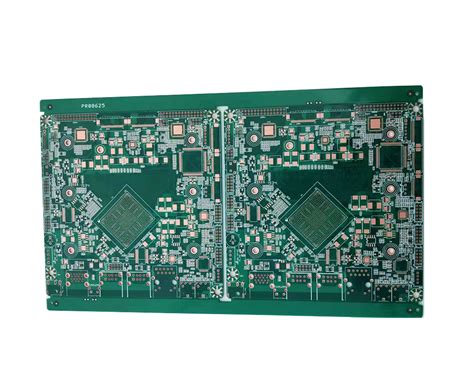
Thermal Management Solutions Using Aluminum PCBs
In the realm of electronic design, effective thermal management is crucial to ensure the longevity and reliability of electronic components. As devices become more compact and powerful, the need for efficient heat dissipation solutions has become increasingly important. One such solution that has gained prominence is the use of aluminum printed circuit boards (PCBs). These boards, often referred to as metal core PCBs, offer a unique approach to managing heat in electronic assemblies.
Aluminum PCBs are distinguished by their construction, which typically involves a thin layer of thermally conductive dielectric material bonded to an aluminum base.
This configuration allows for superior heat transfer compared to traditional fiberglass-based PCBs. The aluminum base acts as a heat sink, efficiently dissipating heat away from critical components. Consequently, this design minimizes the risk of overheating, which can lead to component failure or reduced performance.
The advantages of aluminum PCBs extend beyond their thermal properties.
They also offer mechanical benefits, such as increased durability and rigidity. This makes them particularly suitable for applications where mechanical stress is a concern, such as in automotive or industrial environments. Furthermore, the use of aluminum as a substrate material provides a lightweight solution, which is advantageous in applications where weight is a critical factor.
Transitioning to the thermal performance of aluminum PCBs, it is essential to consider their role in high-power applications.
In such scenarios, the ability to efficiently manage heat is paramount. Aluminum PCBs excel in this regard due to their high thermal conductivity, which allows for rapid heat dissipation. This characteristic is particularly beneficial in LED lighting systems, where maintaining a stable operating temperature is crucial for both performance and longevity. By effectively managing heat, aluminum PCBs help prevent thermal degradation of LEDs, thereby extending their lifespan and ensuring consistent light output.
Moreover, the versatility of aluminum PCBs makes them suitable for a wide range of applications.
From consumer electronics to telecommunications, these boards are increasingly being adopted across various industries. Their ability to handle high thermal loads while maintaining structural integrity makes them an attractive option for designers seeking reliable thermal management solutions.
In addition to their technical benefits, aluminum PCBs also offer cost advantages.
While the initial material cost may be higher than that of traditional PCBs, the long-term savings in terms of reduced cooling requirements and extended component life can be significant. This cost-effectiveness, combined with their superior performance, makes aluminum PCBs a compelling choice for many applications.
As the demand for more efficient and compact electronic devices continues to grow, the importance of effective thermal management cannot be overstated.
Aluminum PCBs provide a robust solution that addresses the challenges associated with heat dissipation in modern electronic designs. By leveraging their unique properties, designers can achieve enhanced performance, reliability, and longevity in their products.
In conclusion, aluminum PCBs represent a significant advancement in thermal management technology. Their ability to efficiently dissipate heat, coupled with their mechanical and cost advantages, makes them an ideal choice for a wide range of applications. As industries continue to push the boundaries of electronic design, the role of aluminum PCBs in ensuring optimal thermal performance will undoubtedly become even more critical.
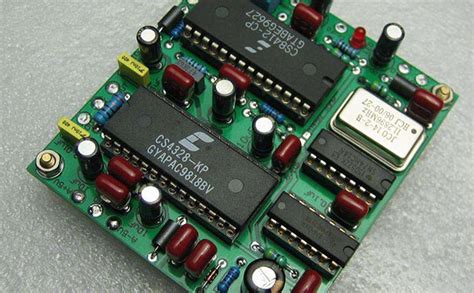
Comparing Metal Core And Traditional FR4 PCBs
In the realm of printed circuit boards (PCBs), the choice of substrate material plays a crucial role in determining the performance, reliability, and cost-effectiveness of electronic devices. Among the various options available, metal core PCBs and traditional FR4 PCBs are two prominent types that cater to different application needs. Understanding the distinctions between these two can aid in making informed decisions for specific electronic projects.
Metal core PCBs, often referred to as MCPCBs, are characterized by their use of a metal base, typically aluminum or copper, which serves as the core of the board.
This metal core is sandwiched between layers of dielectric material and copper circuitry. The primary advantage of MCPCBs lies in their superior thermal management capabilities. The metal core acts as a heat sink, efficiently dissipating heat away from critical components. This feature is particularly beneficial in high-power applications, such as LED lighting, power converters, and automotive electronics, where excessive heat can lead to performance degradation or failure.
In contrast, traditional FR4 PCBs are constructed using a fiberglass-reinforced epoxy laminate as the substrate material.
FR4 is renowned for its excellent electrical insulation properties, mechanical strength, and cost-effectiveness. These attributes make FR4 PCBs a popular choice for a wide range of applications, from consumer electronics to telecommunications. However, FR4’s thermal conductivity is relatively low compared to metal core alternatives, which can pose challenges in high-temperature environments.
Transitioning from the thermal properties to the mechanical aspects, metal core PCBs offer enhanced durability due to their robust construction.
The metal base provides additional mechanical support, reducing the risk of warping or bending under stress. This makes MCPCBs suitable for applications subjected to mechanical vibrations or harsh environmental conditions. On the other hand, FR4 PCBs, while generally reliable, may require additional reinforcement or design considerations to withstand similar conditions.
Another critical factor to consider is the cost implications of each type of PCB.
Metal core PCBs tend to be more expensive than their FR4 counterparts due to the use of metal materials and the complexity of their manufacturing processes. This cost difference can be a deciding factor for projects with budget constraints. However, the long-term benefits of improved thermal performance and reliability may justify the initial investment in MCPCBs for certain applications.
Furthermore, the choice between metal core and FR4 PCBs can also impact the design flexibility and complexity of the circuit.
FR4 PCBs offer greater versatility in terms of layer count and design intricacies, making them suitable for complex multi-layered circuits. In contrast, metal core PCBs are typically limited to fewer layers due to the challenges associated with drilling and routing through the metal substrate.
In conclusion, the decision between metal core and traditional FR4 PCBs hinges on a careful evaluation of the specific requirements of the electronic application. While metal core PCBs excel in thermal management and mechanical robustness, traditional FR4 PCBs offer cost-effectiveness and design flexibility. By weighing these factors, engineers and designers can select the most appropriate PCB type to optimize the performance and reliability of their electronic devices.

Innovations In Aluminum PCB Manufacturing Techniques
In recent years, the electronics industry has witnessed significant advancements in printed circuit board (PCB) technology, with aluminum PCBs emerging as a prominent innovation. These PCBs, known for their excellent thermal conductivity and durability, have become increasingly popular in applications requiring efficient heat dissipation, such as LED lighting, power converters, and automotive electronics. As the demand for high-performance electronic devices continues to grow, manufacturers have been compelled to explore and implement innovative techniques in aluminum PCB manufacturing to enhance their performance and reliability.
One of the most notable advancements in aluminum PCB manufacturing is the development of improved thermal management solutions.
Traditionally, PCBs have relied on copper as the primary material for heat dissipation. However, aluminum offers a more cost-effective and lightweight alternative, making it an attractive option for many applications. By incorporating advanced thermal interface materials and optimizing the design of the aluminum substrate, manufacturers have been able to significantly enhance the thermal performance of these PCBs. This improvement not only ensures the longevity of electronic components but also allows for more compact and efficient designs.
In addition to thermal management, advancements in surface treatment techniques have played a crucial role in the evolution of aluminum PCBs.
Surface treatments such as anodizing and chemical conversion coating have been employed to improve the corrosion resistance and electrical insulation properties of aluminum substrates. These treatments create a protective layer on the surface of the aluminum, preventing oxidation and ensuring the long-term reliability of the PCB. Moreover, these techniques have been refined to allow for better adhesion of solder masks and other coatings, further enhancing the performance and durability of aluminum PCBs.
Another significant innovation in aluminum PCB manufacturing is the adoption of advanced fabrication processes.
Techniques such as laser drilling and precision milling have enabled manufacturers to produce PCBs with intricate designs and complex geometries. These processes allow for the creation of smaller vias and more precise traces, which are essential for high-density applications. Furthermore, the use of computer-aided design (CAD) software and automated manufacturing systems has streamlined the production process, reducing lead times and minimizing errors. This level of precision and efficiency is crucial in meeting the ever-increasing demands of the electronics industry.
Moreover, the integration of environmentally friendly practices in aluminum PCB manufacturing has gained traction in recent years.
As sustainability becomes a priority for many industries, manufacturers are exploring ways to reduce waste and energy consumption during the production process. Techniques such as recycling aluminum scrap and utilizing energy-efficient equipment have been implemented to minimize the environmental impact of PCB manufacturing. These efforts not only contribute to a more sustainable industry but also align with the growing consumer demand for eco-friendly products.
In conclusion, the innovations in aluminum PCB manufacturing techniques have significantly enhanced the performance, reliability, and sustainability of these essential components. Through improved thermal management solutions, advanced surface treatments, precision fabrication processes, and environmentally friendly practices, manufacturers have been able to meet the evolving needs of the electronics industry. As technology continues to advance, it is expected that further innovations will emerge, solidifying the role of aluminum PCBs as a vital component in the development of high-performance electronic devices.





